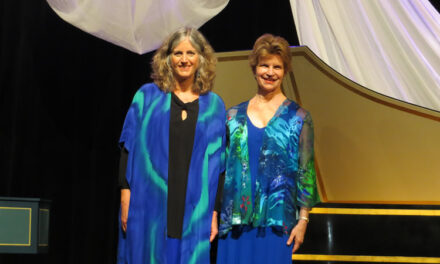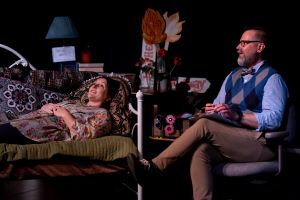Carmina Burana is a collection of two dozen bawdy medieval songs set to music by Bavarian composer Carl Orff (1895-1982). It is a popular choral work driven by primitive harmonies and incessant and obstinate rhythms. It owes its popularity to its immediate accessibility to even unsophisticated listeners. A steadfast opponent of the use of counterpoint (simultaneously playing melodies against each other in similar or contrary motion), Orff preferred rhythmic repetition and percussive effects over a simple harmony framework. Indeed, in the two works which complement Carmina Burana, Catulli Carmina (Songs of Catullus) and Trionfo di Afrodite (Triumph of Aphrodite), no melodic instruments accompany the singers, only percussion instruments.
The work opens and closes with the mighty invocation, “O Fortuna….” Much imitated by the advertising industry, this signature piece allowed us to enjoy the massive Choral Society of Greensboro.* The chorus and Greensboro Symphony were dressed in a variety of pastel shirts and black slacks, making the stage as colorful as an Easter basket full of dyed eggs. Special mention must be made of the excellent Greensboro Youth Chorus which sang its parts with excellent intonation. Bruce Keisling conducted. The performance, the first of two given in War Memorial Auditorium, was part of the orchestra’s Masterworks Series.
The bulk of the solo work is given to baritone soloist Jeremy Kelly, whose sweet and warm voice was seductive from the start. Unfortunately, he was positioned at the extreme left of the stage (stage right), far from the centrally located “sweet spot,” so that he was almost inaudible in louder passages. The usually humorous song of the drunken priest “Ego sum abbas” sounded no more impious than a slight over-indulgence in communion wine.
Soprano Jennifer Check lent her gorgeous voice to the nubile songs of seduction in the last third of the cantata. She has a lovely high register; especially beautiful was the climactic jump of a ninth and the ensuing triplets at the opening of “Dolcissime,” although all her songs would have benefitted greatly from a more flirtatious style.
One of the most memorable songs in the cantata is the song of the burnt swan as it lies roasting on a spit in the tavern. “Cignus ustus cantat” is a novel number, often sung in falsetto because of its extremely high notes, but here the part was forcefully sung by tenor Scott Scully, who sang the entire number in full voice – Bravo!
The Greensboro Symphony’s Resident Conductor, Bruce Kiesling, who also serves as Artistic Director of the Greensboro Choral Society, opened the concert with a full-bodied performance of Ottorino Respighi’s Fountains of Rome. Kiesling’s large and curliqued gestures made the lush loud passages sound splendid in the colorful trail-blazing orchestration, but soft passages lacked balance and intensity.
The large audience was surprised by the early intermission, but roared its approval of the Orff work.
*In addition, the chorus included members of the Guilford College Choir, prepared by their director, Dr. Wendy Looker. (updated 3/25/09).












